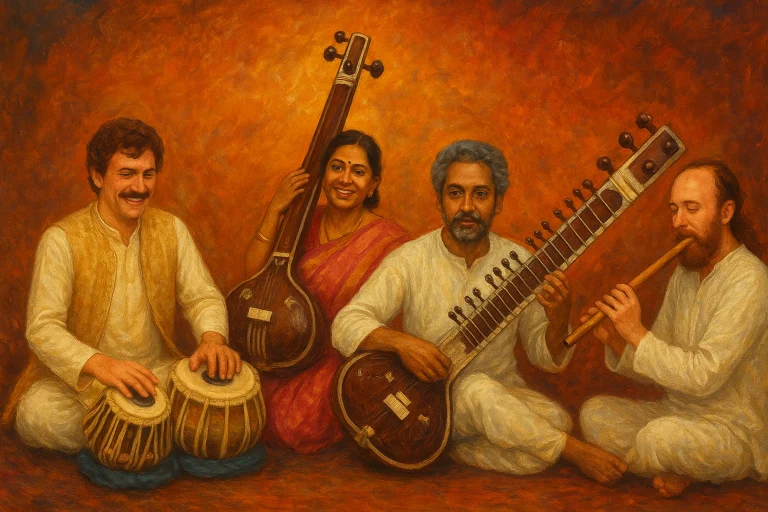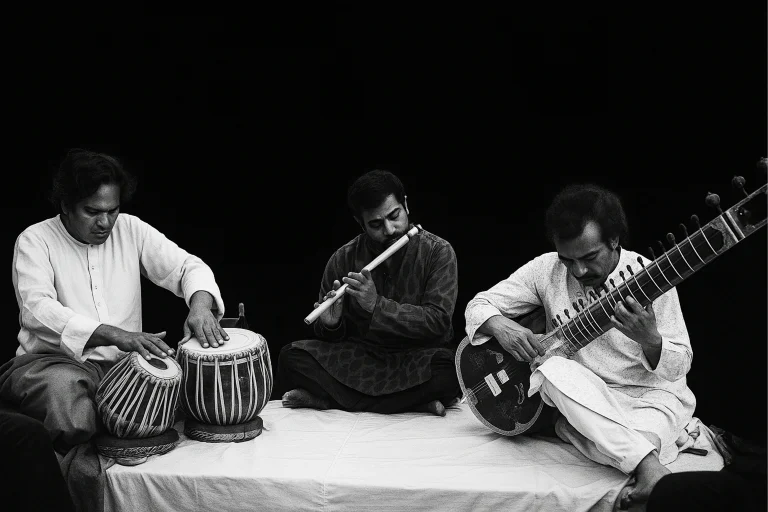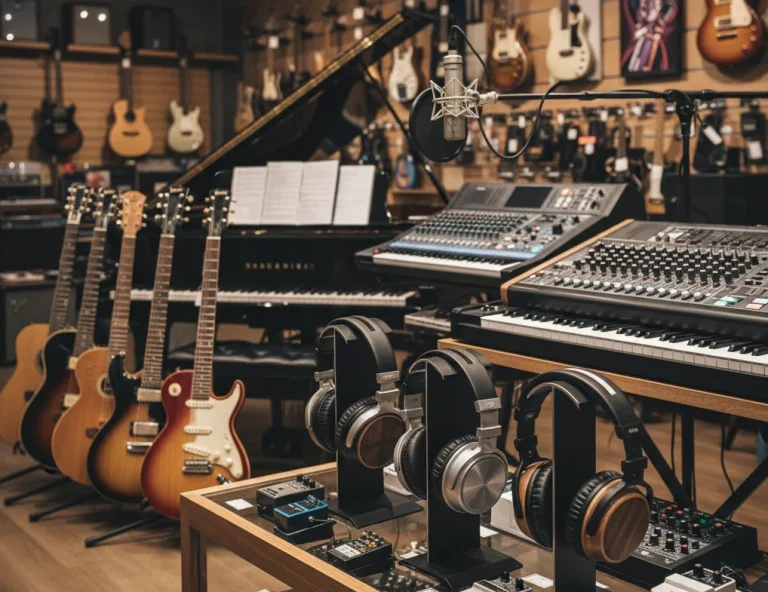All Topics
- Alchemizing Music Concepts for Students
- Artist Spotlight
- artium gift card
- Artium Maestros
- Artium News
- buying guide
- Carnatic Music
- Devotional Music
- Editorials by Ananth Vaidyanathan
- Film Music
- Guitar
- Hindustani Classical Music
- Indian Classical Music
- Indian Folk Music
- Insights
- Instruments
- Karaoke Singing
- Keyboard
- Kids Music
- maestros
- Music Education
- Music for Kids
- Music Industry
- Music Instruments
- Music Legends
- Music Theory
- Music Therapy
- Piano
- piano guide
- Success Stories
- Tamil Film Music
- Telugu Film Music
- Time Theory
- Tools
- Uncategorized
- Vocal Singing
- Vocals
- western classical music
- western music
- Western vocal music
The Hindustani System – Character and the Criticality of Theka
The Hindustani System – Character and the Criticality of Theka
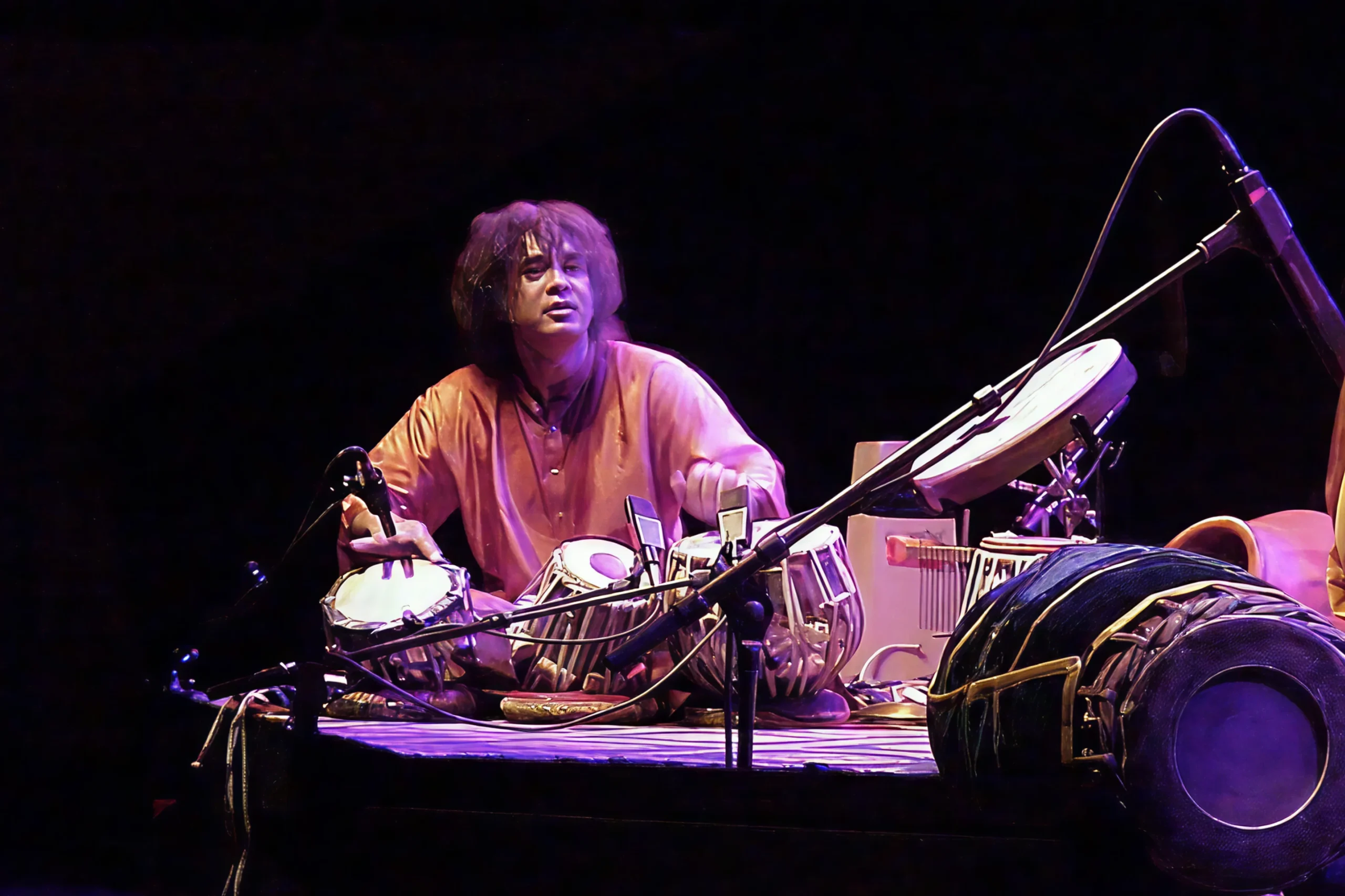
Table of Contents
(The Khayal System of Tala-s)
In Hindustani classical music, every note may rise and fall like a breath, floating in the air like a living entity. But beneath all that beauty, there is a heartbeat — the theka. Without it, the grandeur of khayal gayaki would risk losing its anchor. With it, music finds its pulse, its grounding, and its magic.
This is not just theory or poetic exaggeration. Ask any khayal vocalist, instrumentalist, or tabla player, and they’ll tell you: theka isn’t just rhythm. It is a presence. A companion. A timekeeper who gently whispers, “Sam is here… come back when you’re ready.”
Let us journey deeper into understanding why theka is the lifeline of the Hindustani system, especially in khayal music, where freedom and form must exist in perfect harmony.
What is Theka? More Than Just Rhythm
In simple terms, theka is the basic rhythmic pattern played on the tabla that defines a tala (rhythmic cycle). It is composed of specific bols (syllables or strokes) arranged in a repeating cycle, each with its unique accents and personality.
But in truth, theka is much more than that definition. It is not simply a mechanical structure of beats — it is the character of the tala itself. It is what makes Teentaal feel different from Rupak, or why Dadra feels intimate while Ektal feels majestic.
Think of it as the DNA of the tala. Without it, the cycle exists in theory but not in experience. With it, the tala comes alive, dances, and breathes alongside the music.
The Pulse Beneath the Melody
We often call the tabla an “accompanist.” But this label can be misleading. The tabla is not merely following the singer or instrumentalist. It is the silent architect of time.
When a vocalist sings an alaap — stretching notes, pausing mid-phrase, or soaring through a fast taan — the tabla holds the ground. Its theka continues like a river flowing steadily, even when the boat (the melody) sways in different directions.
This steady presence provides both comfort and challenge. Comfort, because the vocalist knows they can return to Sam at any time. Challenge, because aligning one’s improvisation perfectly with the theka creates that thrill, that moment of “clicking into place” that defines Hindustani music.
Tala and Its Personalities
Each tala has its own character, and theka is the mirror that reflects that personality.
- Teentaal (16 beats): Balanced, symmetrical, and majestic. Its four equal divisions of 4 beats each feel like walking through a royal courtyard. Grandeur is built into its very structure.
- Jhaptaal (10 beats): Playful and teasing. With its 2-3-2-3 arrangement, it refuses to be predictable. The listener is constantly nudged to pay attention.
- Rupak (7 beats): Unusual and surprising. Unlike most talas, Rupak begins with a khaali (empty beat) rather than a taali. This inversion immediately catches the ear and sets a unique mood.
- Dadra (6 beats): Light, lilting, and intimate. Often used in semi-classical genres like thumri, Dadra’s theka feels conversational, almost like a friend whispering.
It is the theka that reveals these personalities. Without the repeating bols, the structure of tala would remain abstract. With theka, it becomes music.
Theka in Khayal Gayaki

Khayal is often described as the most imaginative and improvisatory form of Hindustani classical music. The singer is free to explore ragas, stretch notes, create taans, and linger on emotions. But this freedom is never lawless. It requires a framework, and that framework is tala, expressed through theka.
- During alaap, when the singer introduces the raga slowly, the tabla may remain silent or play sparingly. But once the bandish begins, the theka enters — like a heartbeat suddenly audible.
- In bada khayal, where the pace is slow and explorative, the tabla’s theka becomes a gentle reassurance, giving the singer the courage to take risks.
- In chhota khayal, where the tempo is faster and taans are frequent, the theka must be firm yet flexible, ready to catch the vocalist’s daring flights.
When the singer lands a taan exactly on Sam — the first beat of the cycle — the entire performance comes alive. That moment is almost spiritual, like sunrise at the perfect instant. Even an untrained listener feels the alignment, the click, the magic.
The Tabla Player’s Role: Dialogue and Decoration

A skilled tabla player does not simply repeat theka mechanically. Instead, they decorate it, vary it, and engage in dialogue with the vocalist or instrumentalist.
- Variation: By altering dynamics, adding small flourishes, or shifting emphasis, the tabla player keeps the theka fresh.
- Dialogue: When the singer elongates a phrase, the tabla may respond with patience, stretching the silence. When the singer accelerates, the tabla may intensify its theka to match the energy.
- Playfulness: Theka allows room for improvisation — not to break its core, but to dance around it. This play between stability and creativity is what gives khayal performances their vibrancy.
Yet, the essence of theka remains untouched. No matter how many variations are added, the listener always knows where Sam is. That’s the beauty of theka — flexible yet unshakable.
The Grace of Alignment
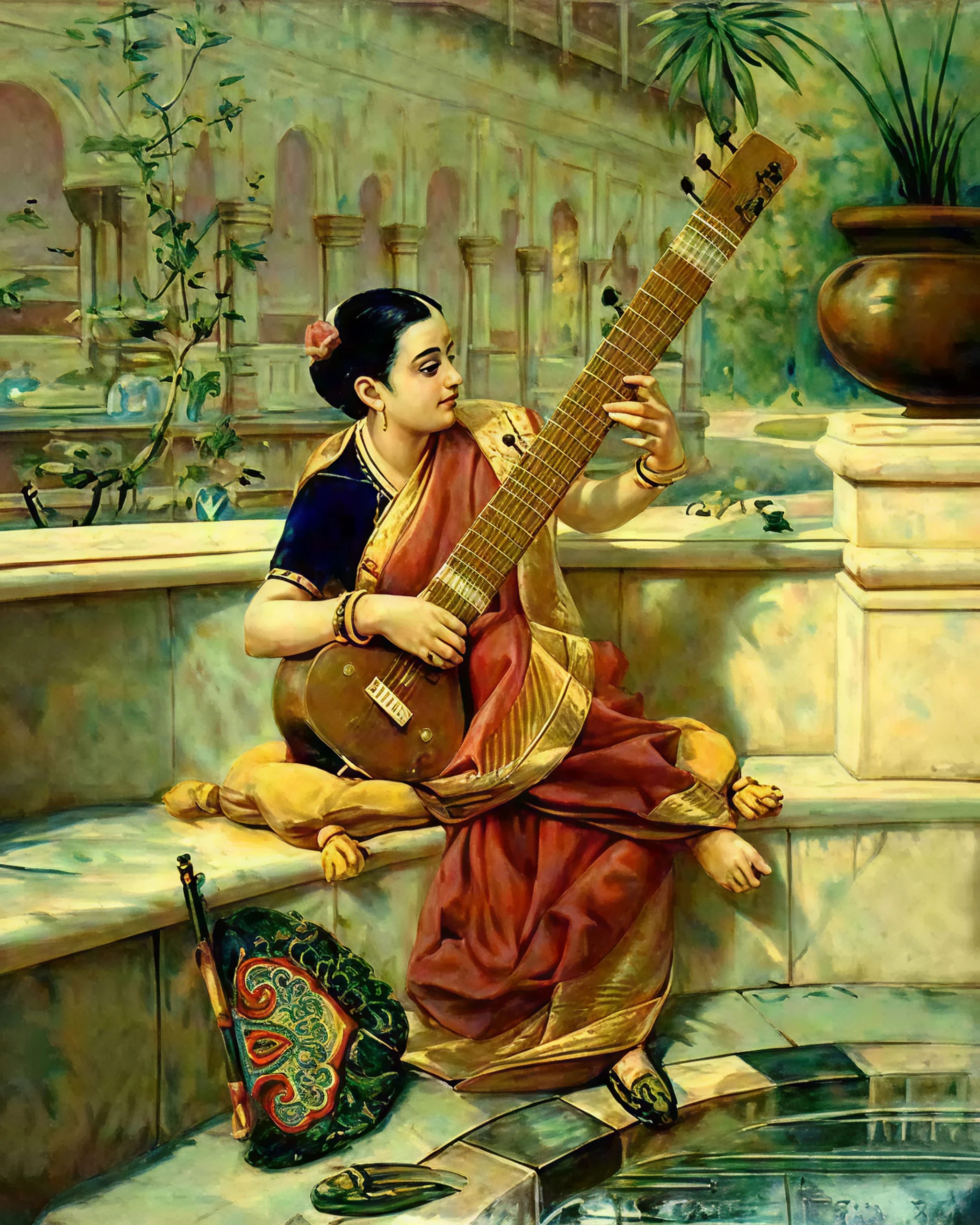
One of the most profound joys in Hindustani music is the alignment of melody and rhythm. When a singer’s taan or phrase resolves perfectly onto Sam, accompanied by the emphatic stroke of the tabla, the audience feels a collective thrill.
This is why even listeners with no training instinctively clap on Sam during performances. They may not know the mathematics of tala, but they feel its truth. Theka makes tala experienceable rather than just intellectual.
Sur, Taal, and Theka: A Symbiotic Relationship
There is a famous saying: Sur bina kya raag, aur taal bina kya theka?
Just as swaras (notes) form the flesh of music, tala forms its skeleton. Without tala, music lacks structure. Without swaras, it lacks beauty.
- Sur (melody) provides the emotional content.
- Taal (rhythm) provides the structure.
- Theka is the bridge — the living, breathing presence that binds sur and taal together.
This relationship is not mechanical; it is deeply human. It reflects the balance of freedom and discipline, creativity and control, individuality and community.
Why Theka Matters Beyond Music?
Theka teaches us something larger than music. It teaches patience, grounding, and the art of presence. In life, too, we need a theka — something steady beneath the chaos of improvisation.
Just as the singer may wander through notes but always returns to Sam, we wander through experiences but need an anchor to return to. Theka is that reminder: rhythm is life itself.
Experiencing Theka as a Listener
You don’t need years of training to feel theka. Next time you attend a khayal concert:
- Close your eyes.
- Listen not just to the melody, but to the pulse beneath it.
- Try to sense where Sam is, where the cycle restarts.
- Notice the variations — how the tabla never loses its grounding, no matter how adventurous the singer becomes.
Soon, you’ll begin to feel the quiet confidence of theka. It’s like a friend who doesn’t demand attention but is always there when you need them.
The Quiet Magic of Theka
Khayal is freedom. Theka is a form. One without the other is incomplete.
The vocalist may soar into endless improvisation, but it is the theka that gives direction. The tabla player may decorate and play, but it is the theka that keeps the music grounded. Together, they create music that is both wild and wise, like a river dancing within its banks.
So, the next time you listen to Hindustani classical music, don’t just hear the notes. Feel the rhythm beneath. Sense the heartbeat of theka — repeating, reassuring, waiting to catch you if you ever lose your way.
In that quiet repetition lies the soul of Hindustani classical music. And once you feel it, you’ll never listen the same way again.
FAQs Character and Criticality of Theka
Theka is the basic rhythmic pattern or framework of beats that defines a tala in Hindustani classical music.
Theka is considered the heartbeat of khayal gayaki because it provides the rhythmic foundation that guides and supports the vocalist’s improvisation and expression.
Theka is the basic repetitive pattern of a tala, while other tabla compositions like kaida, rela, or tukda are artistic variations or solo pieces based on that tala.
Taal is the rhythmic cycle or framework of beats, while Theka is the specific pattern played on the tabla to represent that taal.
Yes — Artium Academy does include such concepts: their Hindustani Classical and Tabla curricula teach rhythm, taals, and laya, which implies learning the theka (the specific pattern in tabla or accompaniment) as part of understanding taals.
Mastering theka is important because it helps students maintain rhythmic precision, understand taal structure, and sync their singing or playing with the tabla accompaniment.


